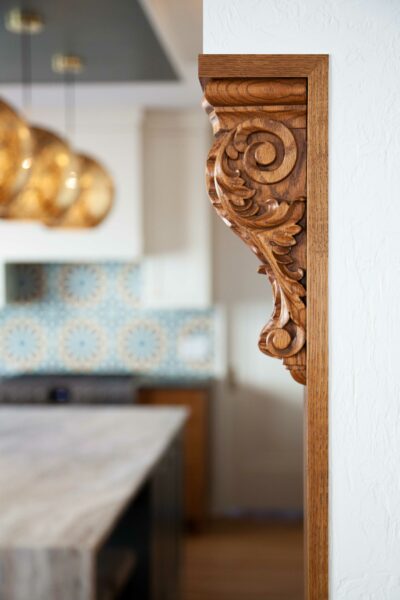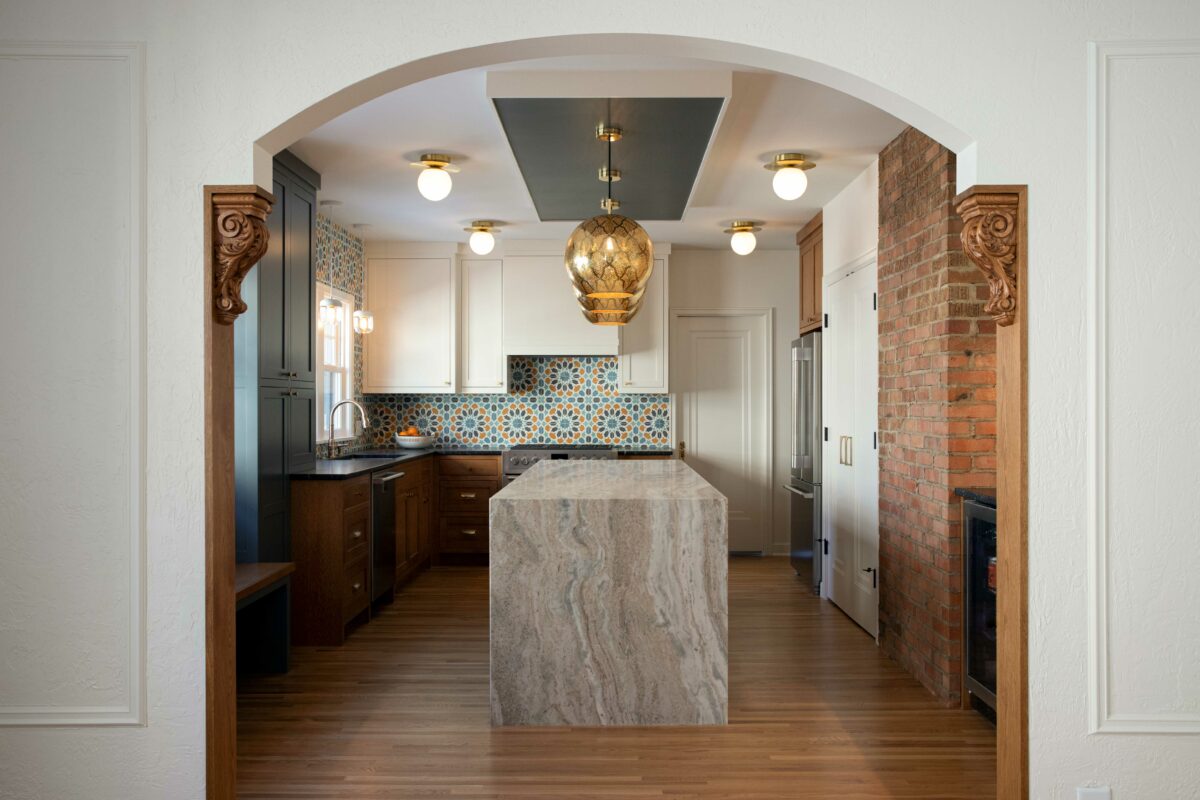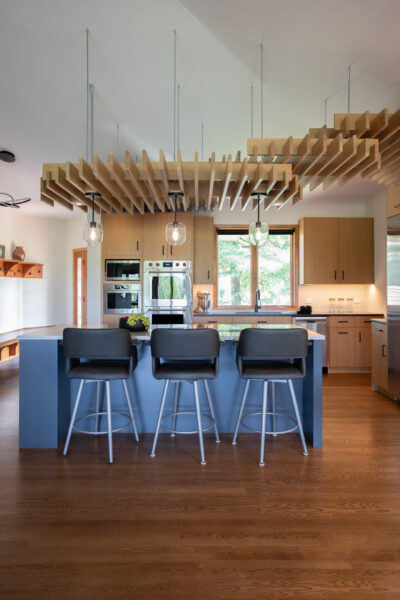Design in Wood: Preservation & Modern Incorporation
Wood has long been valued for its strength, beauty, and ability to preserve traditional craftsmanship. Whether through intricate details like corbels or bold architectural elements like ceiling structures, wood serves as a bridge between past and present, seamlessly integrating history into contemporary design.
Wooden Corbels
The wooden corbel— a structural and/or decorative bracket— has adorned arches and beams for centuries, an elegant symbol of structural support. Handcrafted wooden corbels are deeply rooted in architectural history and add an artistic touch to any space.
Two charming wooden corbels accent the Tangier Kitchen Transformation remodel, a spectacular blend of historic preservation and more contemporary design elements. Gina Vozka, AIA Architect + ASID Interior Designer, explains the process of preserving the unique history of this space, “the wooden corbels existed in other places throughout the home, so incorporating them in the remodeled kitchen was a thoughtful transition to respect the existing historical elements of the home while adding a transition to the new. Adding these corbels was a way to bring an elegance into the space in a more cost-effective way, compared to homes nearby with full paneling and wood detailing.” The outcome of such a thoughtful approach to integrating a home’s history into a renovation is a seamless integration of past and present.
White Oak Cloud Structure
While corbels honor history through intricate detailing, the North Oaks Cloud Retreat remodel showcases wood’s versatility in modern applications with a bold ceiling feature. A striking white oak cloud structure spans the kitchen ceiling, supporting three pendant lights suspended over the island. This unique feature not only provides functional lighting but also enhances the room with a soft, inviting warmth and effortless luxury.
John Enloe, AIA Architect, explains the inspiration behind the structure, affectionately called ‘the cloud’. “As we first walked into the residence we thought ‘wow, what a beautiful space and view.’ The space was big, open, and vaulted, however, we realized that it was missing something to relate to the human scale. The clients wanted a central island as a place to gather and entertain, and we thought this would be the perfect place to lower something from the ceiling that could relate to the human scale.”
“We wanted this structure to be softer in material and appearance to contrast the existing hard-edged space and create a more cozy, intimate feel. This led to the first discussion of the cloud, and it took off from there.”
The choice of white oak for the cloud was intentional, as the lighter colored wood “provides a warmth and a softer feel than a painted structure” while still complimenting the other design elements throughout the space. This unique wooden focal point brings a refined, cozy atmosphere to the heart of the home.




